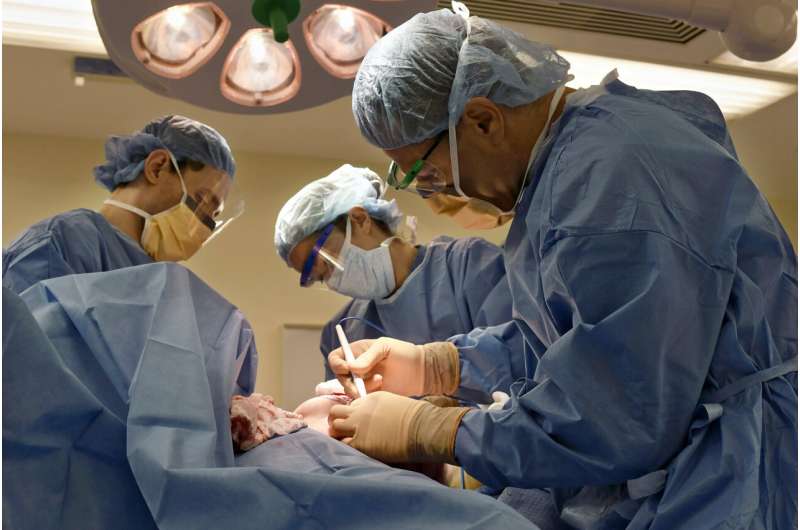
The number of gender-affirming surgeries in the U.S. nearly tripled from 2016 to 2019 before dropping slightly in 2020, according to a study published Wednesday.
The increase likely reflects expanded insurance coverage for transgender care after the Obama administration and some states actively discouraged discrimination based on gender identity, lead author Dr. Jason Wright of Columbia University said. The dip in 2020 can be attributed to the pandemic.
About 48,000 patients underwent such surgeries during the five years studied, with about 13,000 procedures done in 2019, the peak year, and 12,800 in 2020.
A little more than half the patients were ages 19 to 30. Surgeries in patients 18 and younger, were rare: fewer than 1,200 in the highest volume year.
In the last couple of years, many states have taken steps to restrict or ban transgender care for people under age 18, adding to waiting lists of patients seeking care in states that have declared themselves refuges for transgender people.
“This age group is really not what’s driving the overall increase in gender-affirming surgery that we found,” Wright said.
Among the youngest patients, the most common surgeries were breast and chest procedures, with more than 3,000 young people undergoing such operations during the five-year period.
These were likely transgender males—generally high school graduates—having their breasts removed, said Dr. Loren Schechter of Rush University Medical Center in Chicago, who specializes in gender-affirming surgery and was not involved in the study. Having breast surgery at that age allows them to “go to the next phase of their life in a body with which they’re comfortable and is synchronous with their identity,” he said.
The study, published in JAMA Network Open, did not look at more common treatments in minors such as puberty blockers and hormones.
Researchers analyzed records from two national surgery databases. For all age groups, breast surgeries were the most common type, followed by genital surgeries. The researchers also counted about 6,600 cosmetic procedures such as liposuction, face lifts and nose reshaping.
The gender identities of the patients were unclear in the data and couldn’t be inferred in categories like breast reconstruction, which could be for either transgender males or females.
Private insurance covered most patients who had such surgeries, the researchers found. About 1 in 4 patients received coverage through Medicaid, the federal-state health care insurance program that helps pay for health care for low-income people.
More information:
National Estimates of Gender-Affirming Surgery in the US, JAMA Network Open (2023). 10.1001/jamanetworkopen.2023.30348 jamanetwork.com/journals/jaman … /fullarticle/2808707
Journal information:
JAMA Network Open
Source: Read Full Article





